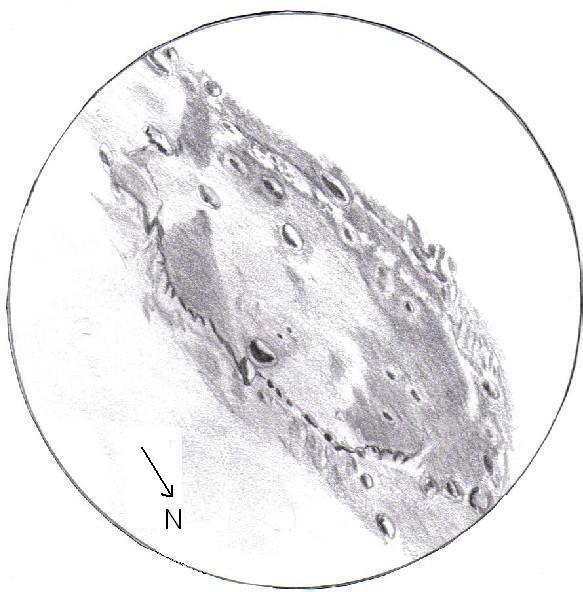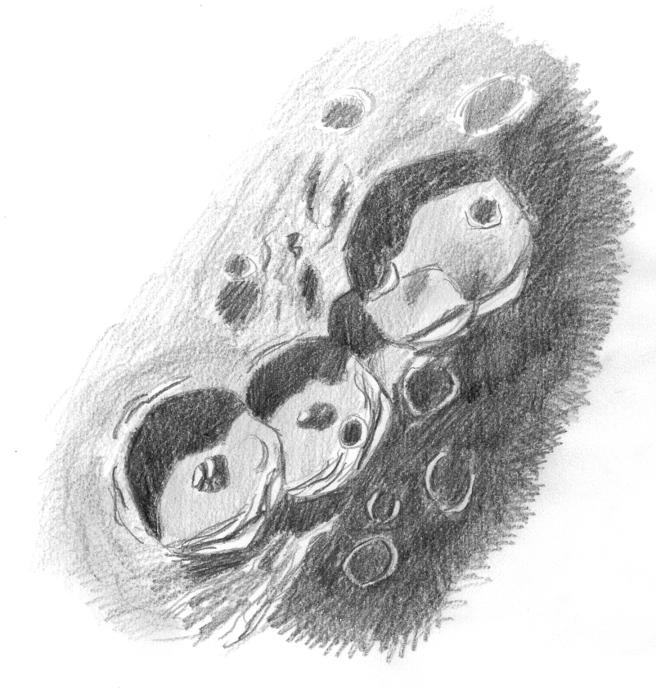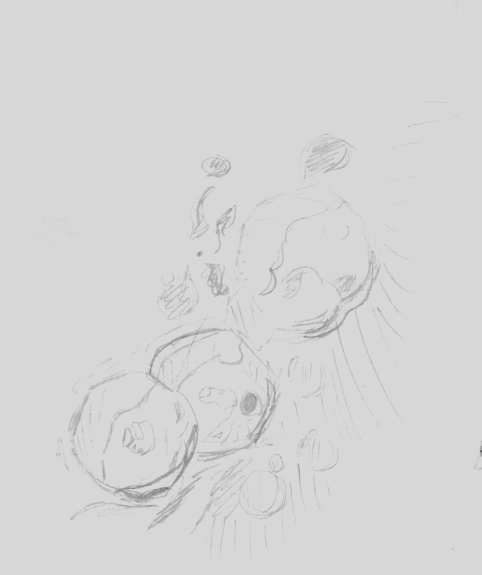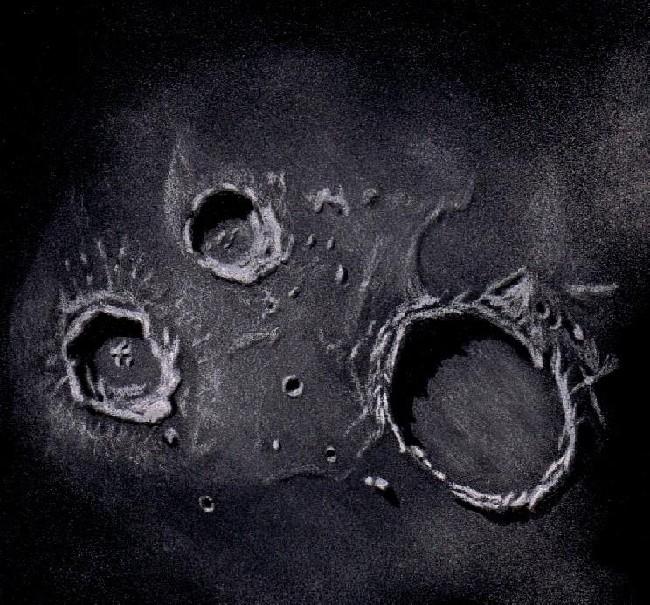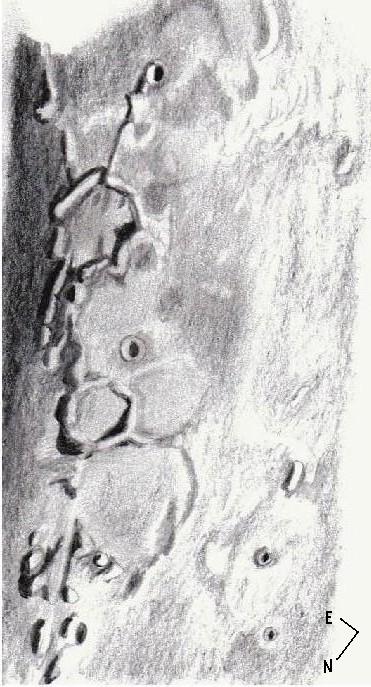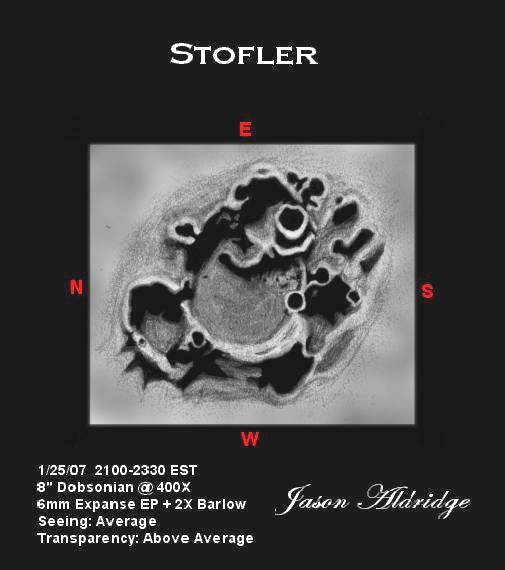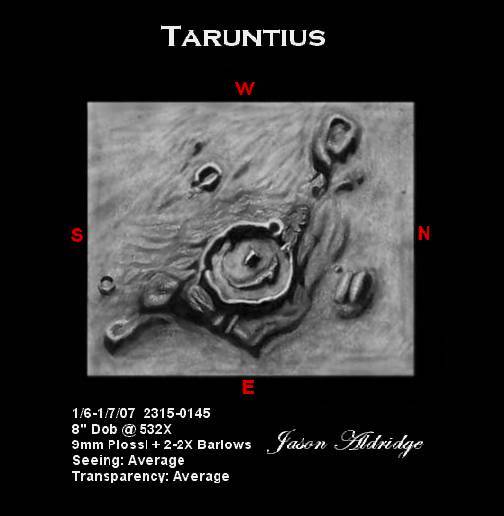Crater Schickard
One of the many large and interesting craters on the visible lunar surface is 227
km. diameter walled plain crater Schickard. This Pre-Nectarian crater is somewhat
isolated from craters of equal size. It is the shallow floor of Schickard that
presents its most interesting features. After the large impactor struck the lunar
highlands to form this crater, lava passed to the surface through cracks that
served as channels. Tens of millions of years later the gargantuan impact forming
the Orientale basin occurred blanketing the crater with highland ejecta. After
some time more flooding of dark mare lava created the two notable dark patches on
the crater floor to the Northwest and Southeast. This grand crater can easily be
seen in a modest telescope with good lighting one or two days before full moon.
Sketching:
For this sketch I used: copy paper, a no. 2 graphite pencil, fingertips for
blending.
Telescope: 10 inch f/ 5.7 Dobsonian at 233X
Date: 11-4-2006, Time: 2:11-3:15 UT
Clear skies: 4.4°C (40°F)
Seeing: Pickering 5/10
Colongitude 70.5 °
Lunation 12.9 days
Illumination 97 %
Frank McCabe

